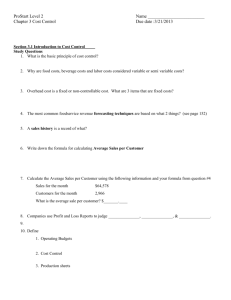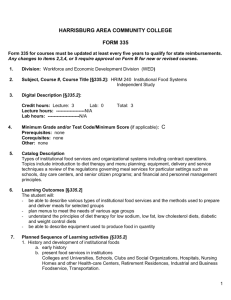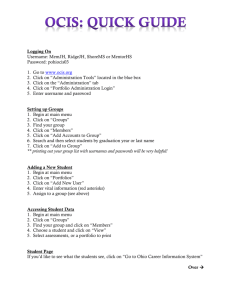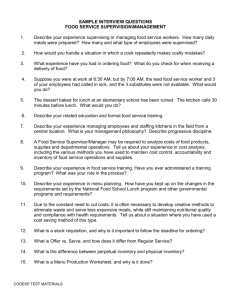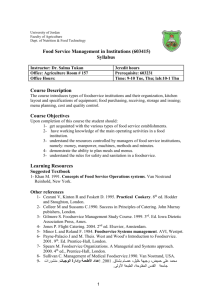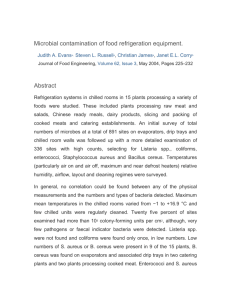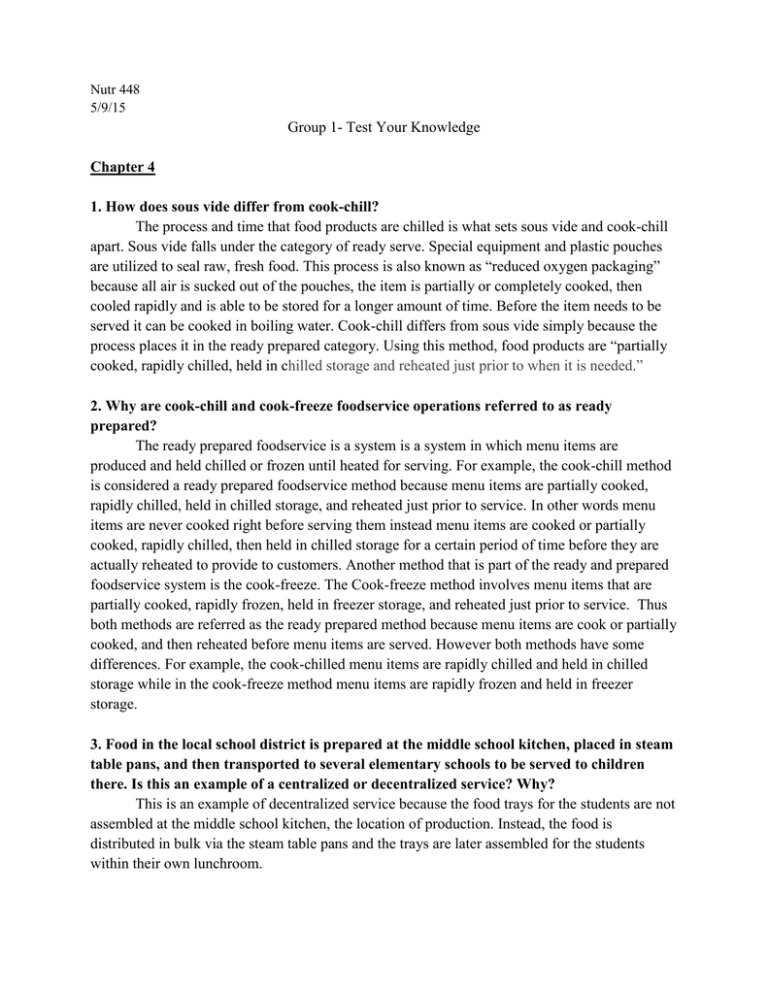
Nutr 448
5/9/15
Group 1- Test Your Knowledge
Chapter 4
1. How does sous vide differ from cook-chill?
The process and time that food products are chilled is what sets sous vide and cook-chill
apart. Sous vide falls under the category of ready serve. Special equipment and plastic pouches
are utilized to seal raw, fresh food. This process is also known as “reduced oxygen packaging”
because all air is sucked out of the pouches, the item is partially or completely cooked, then
cooled rapidly and is able to be stored for a longer amount of time. Before the item needs to be
served it can be cooked in boiling water. Cook-chill differs from sous vide simply because the
process places it in the ready prepared category. Using this method, food products are “partially
cooked, rapidly chilled, held in chilled storage and reheated just prior to when it is needed.”
2. Why are cook-chill and cook-freeze foodservice operations referred to as ready
prepared?
The ready prepared foodservice is a system is a system in which menu items are
produced and held chilled or frozen until heated for serving. For example, the cook-chill method
is considered a ready prepared foodservice method because menu items are partially cooked,
rapidly chilled, held in chilled storage, and reheated just prior to service. In other words menu
items are never cooked right before serving them instead menu items are cooked or partially
cooked, rapidly chilled, then held in chilled storage for a certain period of time before they are
actually reheated to provide to customers. Another method that is part of the ready and prepared
foodservice system is the cook-freeze. The Cook-freeze method involves menu items that are
partially cooked, rapidly frozen, held in freezer storage, and reheated just prior to service. Thus
both methods are referred as the ready prepared method because menu items are cook or partially
cooked, and then reheated before menu items are served. However both methods have some
differences. For example, the cook-chilled menu items are rapidly chilled and held in chilled
storage while in the cook-freeze method menu items are rapidly frozen and held in freezer
storage.
3. Food in the local school district is prepared at the middle school kitchen, placed in steam
table pans, and then transported to several elementary schools to be served to children
there. Is this an example of a centralized or decentralized service? Why?
This is an example of decentralized service because the food trays for the students are not
assembled at the middle school kitchen, the location of production. Instead, the food is
distributed in bulk via the steam table pans and the trays are later assembled for the students
within their own lunchroom.
Nutr 448
5/9/15
5. How and why would lighting and ventilation needs differ between the dining area and
the kitchen used to prepare food in a university dining center?
The need for lighting will vary greatly from the kitchen where food is being prepared
compared to the dining area. First of all, the Food Code requires at least 50 foot-candles where
employees prepare and handle food and equipment. This seems obvious as there are many
factors an employee would need to pay attention to, to make sure they are handling food and the
equipment safely. Whereas in the dining area the lighting can be manipulated to affect the mood
and could have anywhere from 5 to 100 foot-candles.
Ventilation will differ between the two areas as well because the needs are different
between the two areas. In the areas where food is being prepared, proper ventilation is required
because heat, odors, grease, steam and moisture can be produced in great quantities. The needs
for proper ventilation will be especially important in areas as such, but also in dining areas to
keep people comfortable.
Chapter 5
1. What are the four areas in the procurement subsystems?
The four areas in procurement subsystems are purchasing, receiving, storage, and
inventory control.
2. How are receiving, storage, and inventory lined with purchasing?
Receiving can be defined as an activity for ensuring that products delivered by suppliers
are those that were ordered in the purchasing activity. After food and supplies have been
received properly, they must be placed in appropriate storage, which i s holding of goods under
proper conditions to ensure quality until time of use. Storage is important to overall operation of
a foodservice because it links receiving and production. Inventory is a record of material assets
owned by an organization. It is supported by the actual presence of products in the storage areas.
5. At the beginning of May, the foodservice operation had $95,000 of food in inventory.
During the month of May a total of $210,000 in food was purchased. At the end of May,
food in inventory was valued at $89,000. What was the cost of food for the month of May?
Beginning inventory + Purchases = Cost of food available
Cost of food available - Ending inventory = Cost of food used
95,000+210,000=305,000-89,000=216,000
The cost of food for the month of May is $216,000.
Nutr 448
5/9/15
6. Using the inventory information in problem 5, calculate the inventory turnover for the
month of May?
The inventory turnover would be as follows: $216,000/$92,000= 2.34 times per month.
Chapter 7
1. Discuss how type of production system, degree of meal preassembly, physical distance
from production to service, and amount of time between production and service impact
the distribution and service subsystem.
Food service managers must take into consideration all of the steps when evaluating
distribution options for their operation. There are two types of production systems: A centralized
service involves assembling plates of food for service in a location adjacent to the preparation
area.
A decentralized service involves transporting food in bulk to a location separate from the
production area and assembling plates of food in that distant location. As the time between the
completion of production and the time of service increases and/or the distance between the two
increases, the options for distribution practices and equipment also increases. Adding the
transportation process necessitates having equipment designed for maintaining temperatures
during transportation.
3. Explain three categories of service.
Table service, counter service, and takeout service, are three categories of service. Table
service occurs when there is food made in kitchen that is plated and then delivered to the
customer at their table. Table service is typically associated with sit-down restaurants. Counter
service is found at diners and coffee shops that look to get customers in and out of their
establishment in a timely manner. Takeout service occurs when individuals purchase food from
a restaurant and can then take the food to another location of their choice.
References
Gregoire, M. (2013). Managing Quality. In Foodservice organizations: A managerial and
systems approach (8th ed., p. 206-220). Upper Saddle River, New Jersey: Pearson Prentice Hall.

